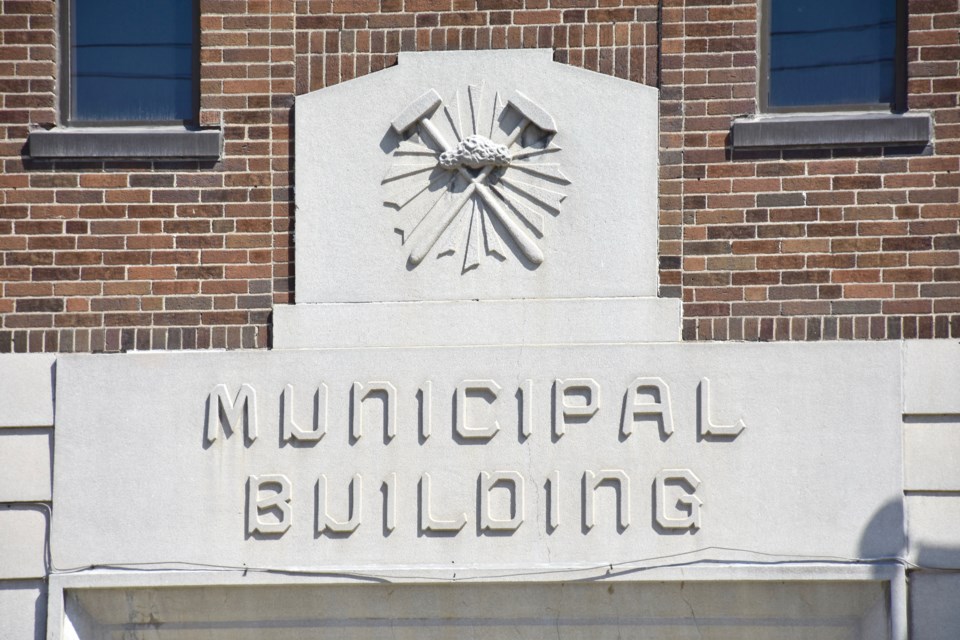Timmins' mayor wants to make sure people have all the information before finalizing the design for roadwork through the downtown core.
“We have one opportunity to do this right,” Mayor George Pirie told council this week.
He is asking for a detailed analysis of the project costs for the minimum timeframe work downtown could be done in, along with the cost to bury the hydro and telephone wires.
In Timmins, the Connecting Link is a 21.35-kilometre stretch of Highway 101 running from Kamiskotia Road in the west to the old railway tracks in Porcupine.
Since 2016 more than $19 million of roadwork has been done on about five kilometres from the top of Rae Hill to Legion Drive.
Earlier this month, council heard from Aecom project managers about the next phases of the project.
In 2020, the focus is Algonquin Boulevard from Mattagami Boulevard South just east of the bridge to Theriault. The work would be done from April to November, with some restoration work in 2021.
The project was back on the council agenda this week.
A request to apply for provincial funding for the next phase of work was approved.
A request for direction on whether or not to bury utilities on the Connecting Link from Fogg Street to Spruce Street was deferred.
The proposed phasing has a section of Algonquin completed every second year. If the work is completed as scheduled, it would disrupt the downtown traffic flow and businesses until 2026.
Pirie is worried about what that will mean for business.
“I’m quite concerned about what a protracted construction along Algonquin is going to mean to our businesses east, west and north and south of Algonquin. The traffic patterns will change, the buying patterns will change,” he said.
When work was being done at the ramp into South Porcupine, he said businesses in its downtown "suffered dramatically".
Director of engineering and public works Pat Seguin said doing the work faster would be difficult.
“The size of the segments that we picked are what’s manageable and what’s doable from a construction perspective. I think if we wanted to scale down the schedule we could do them consecutive years, but my concern was always the business that lives on the junction of two segments would be affected two years in a row,” Seguin said.
Burying the utilities would also cause a delay.
Seguin said the estimate from the consultant is that it wouldn't be done in one construction season.
For the section of road slated to be done next year, Seguin said the infrastructure is at the end of its useful life and is 80-plus years old.
“It’s in bad condition and it was one of our primary areas we wanted to attack five years ago, it’s been a holding pattern now. We’ve been progressing on the Connecting Link doing the easier segments while we were waiting for design and inspection, geotechnical to be done. We are now ready to do it,” he said.
If the project is pushed back, Coun. Rock Whissell is worried the infrastructure will break down and the city won't be able to fix it with the money they could have now if funding is approved.
“Every time we push something back and we spend another million fixing a problem that we knew was already existing is something we’re working backwards also,” he said.
Because there have been ground issues with other projects in the city, Coun. Andrew Marks isn't confident burying the utilities.
From a beautification standpoint, he's in support of it. He asked the issues would be addressed if something needs work and if the highway would be shut down to do it.
Pirie said he isn't averse to doing the first section to get an idea of what the ground holds.
“I think it’s incumbent upon this council at this time to take one more initiative to communicate with the citizens that this is the last time for the next 50 or 60 years that we’re going to be able to do this and it will have a direct impact on how this city shows,” he said.
While burying utilities will cost money, he said there's a "direct impact on whether or not we choose to stay looking like an old mining town or a new vibrant city, in my opinion.”



